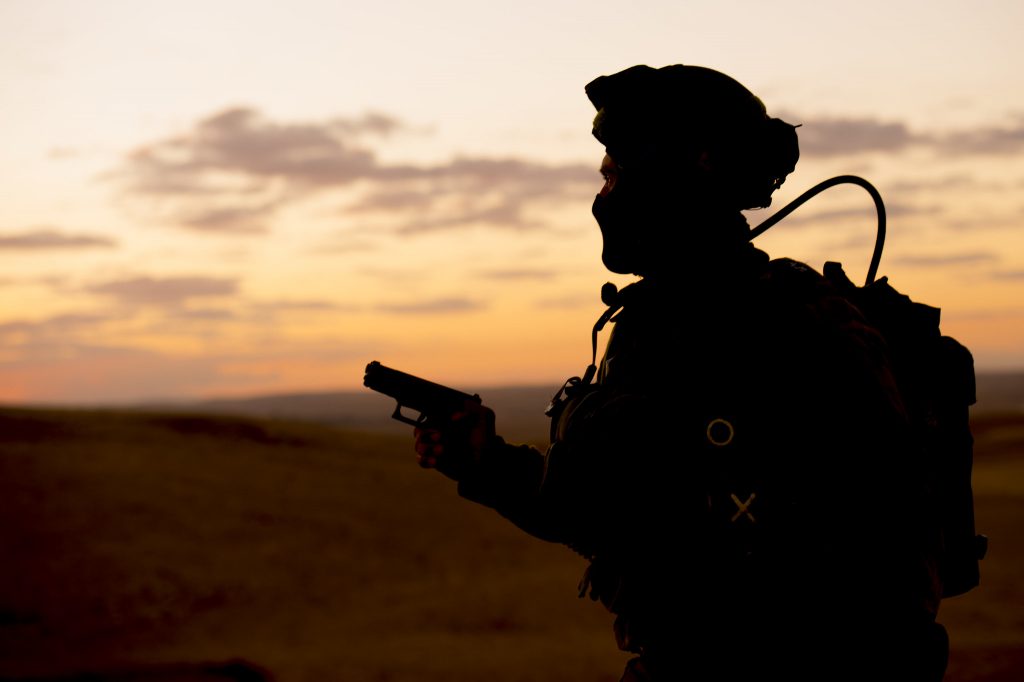Engage with our series as we continue forecasting the future of counterterrorism
Foreword
The twentieth anniversary of the September 11, 2001, terrorist attacks in New York and Washington is a time for reflection and perspective. In the Atlantic Council’s Future of Counterterrorism Project series, some of the world’s foremost counterterrorism and national security practitioners and experts examine whether the United States and its allies should reset the fundamental assumptions, policies, and practices put in place after 9/11 in order to counter today’s and tomorrow’s terrorism threats. It should come as no surprise, twenty years after 9/11, that much needs to change for the future of counterterrorism.
The 9/11 attacks killed 2,977 people and led to a “Global War on Terrorism” against the terrorists responsible—as well as wider conflicts involving South Asia, Europe, the United States, the Middle East, and Southeast Asia. In some ways, the campaign against those responsible for 9/11 has been a success: no terrorist attacks on the scale of 9/11 in twenty years. However, the threat has not been eradicated. Some of the sources of terrorism twenty years ago still threaten peace and security some twenty years later. Threats like domestic terrorism, which last posed a threat in the 1970s, are now back and pose a threat to democracy itself in the United States.
Scope: This series will look at terrorism threats by non-state actors, some supported by hostile governments, to carry out acts of violence (or their cyber equivalent) against civilian targets to advance political goals. This includes threats from groups like al-Qaeda and ISIS, proxies backed by nation-states like Iran, and ideologies with roots in divisive chapters of American history.
The Future of Counterterrorism Project pays special attention to the role of partnerships between governments and within the United States between federal, state, and local governments and the private sector, all of which contribute to addressing the threats from today’s terrorism.
List of acronyms
AI – artificial intelligence
COIN – counterinsurgency
CRISPR – clustered regularly interspaced short palindromic repeats
CT – counterterrorism
CVE – countering violent extremism
DeFi – decentralized finance
DHS – Department of Homeland Security
FBI – Federal Bureau of Investigation
iGEM – International Genetically Engineered Machine
IoT – Internet of Things
ISIS – Islamic State of Iraq and al-Sham
JCPOA – Joint Comprehensive Plan of Action
NKA – non-kinetic act
NRA – National Rifle Association
PKK – Kurdistan Workers’ Party
PPE – personal protective equipment
REMVE – racially or ethnically motivated violent extremism
RPV – remotely piloted vehicle
USAID – US Agency for International Development
WMD – weapons of mass destruction
What these practitioners and experts are saying
Each of the authors in this series writes independently, under the Atlantic Council’s policy of intellectual independence, drawing on their years of experience in counterterrorism:
- Thomas S. Warrick writes about taking advantage of the next few years to plan and resource the efforts needed to end the current wave of terrorism.
- Christopher P. Costa draws on experience with international terrorism to raise the need to combat hyper-tribalism that is driving domestic terrorism.
- Amb. Nathan A. Sales points to the advantages of counterterrorism partnerships, even in an era of great-power competition.
- Mary B. McCord calls for taking on the insider threat within law enforcement.
- Javed Ali writes about the driving factors behind the current “fifth wave” of terrorism: white supremacism and anti-government attitudes.
- LTG Michael Nagata, USA (Ret.) calls for an intellectual reckoning by practitioners and policy makers to address the need for greater investments in non-kinetic counterterrorism efforts.
- Barbara Slavin looks at the missed opportunities to reset relations between the United States and Iran.
- Nate Rosenblatt weighs whether treating Syria as a state sponsor of terrorism advances or holds back US national security interests.
- Barry Pavel and Vikram Venkatram warn of the future threats from bioterrorism, particularly in the aftermath of the COVID-19 pandemic.
- Arun Iyer draws attention to the considerable dangers of non-kinetic forms of terrorism.
- Max Brooks, writing from the future in June 2032, draws attention to the causes of a future domestic terrorist attack on the scale of 9/11. Don’t say you weren’t warned.
- Jennifer A. Counter describes how terrorists will use the Internet as a tool for dual-track efforts at public recruiting and private plotting.
- Christopher Preble examines how the Global War on Terrorism appears to have undermined the United States’ reputation—and how this could have far-reaching geopolitical consequences.
Even with this breadth of expertise, several common themes emerge.
- The United States should not stay locked into ideas and institutions that, arguably, worked well enough over the past twenty years to prevent a recurrence of a mass casualty attack like 9/11 but that are no longer suited to the terrorism threats of the future.
- Military power played a dominant role in US efforts against terrorist threats over the past twenty years, but the future of counterterrorism will require an increase in leaders’ attention and resources for civilian security and law enforcement. Domestic terrorism, in particular, is now a major threat to American democracy, but it obviously does not require a military response.
- Prevention needs to be an increasingly important focus of future counterterrorism efforts. As will building partnerships—both internationally and in the United States.
- Terrorists will continue to innovate and try to surprise. The Internet and social media will continue to be a way for terrorists to recruit and plot attacks. The counterterrorism community needs to use imagination and foresight to anticipate threats and get policy makers to focus on closing doors before attacks occur. Counterterrorism professionals need access to, and the attention of, senior officials to get them to make the necessary changes—including increasing resources—to prevent terrorists from carrying out plots that today sound like speculative fiction but that history over the last twenty years has shown can become terrifyingly real.
- The system of designating state sponsors of terrorism made sense in the 1980s, but the world has gotten more complex. Terrorism is but one way that nations like Iran use nonmilitary means to confront the United States and its allies. The US approach to state sponsors of terrorism needs to be overhauled and updated to address nonmilitary threats from a range of nations.
- In the United States, all presidential administrations since 2001 came into office wanting to focus on domestic issues or conventional national security challenges like great-power competition. The first three administrations of the twenty-first century were all forced to devote considerable attention to counterterrorism. A good strategy alone will not defeat today’s terrorism threats. The Biden administration should not see the choice as being between counterterrorism and other national security priorities. The investments needed in effective counterterrorism today are modest by comparison to the cost of the wars in Afghanistan and Iraq.
- Provided the United States and its allies can make more effective use of civilian security, law enforcement, and prevention programs, there is every reason to believe terrorism can be reduced to a level where the threats can be handled by individual governments without the need to resort to large-scale, decades-long military efforts like in Afghanistan, Iraq, or the campaign to defeat ISIS. The Biden administration, working with its partners, needs to design the end state for today’s terrorism threats, both international and domestic, then it must fully resource those efforts and ensure that they succeed.
By Thomas S. Warrick, director of Forward Defense‘s Future of DHS Project and nonresident senior fellow at the Atlantic Council.
Generously Supported By

Essays
Watch the launch

Forward Defense, housed within the Scowcroft Center for Strategy and Security, generates ideas and connects stakeholders in the defense ecosystem to promote an enduring military advantage for the United States, its allies, and partners. Our work identifies the defense strategies, capabilities, and resources the United States needs to deter and, if necessary, prevail in future conflict.

Through our Rafik Hariri Center for the Middle East and Scowcroft Middle East Security Initiative, the Atlantic Council works with allies and partners in Europe and the wider Middle East to protect US interests, build peace and security, and unlock the human potential of the region.

Counterterrorism Study Group
The Counterterrorism Study Group is a forum for former counterterrorism officials to review the latest threats, to understand emerging trends and future predictions, and to explore creative new proposals for improving the effectiveness of current policies and operations.











Join the conversation